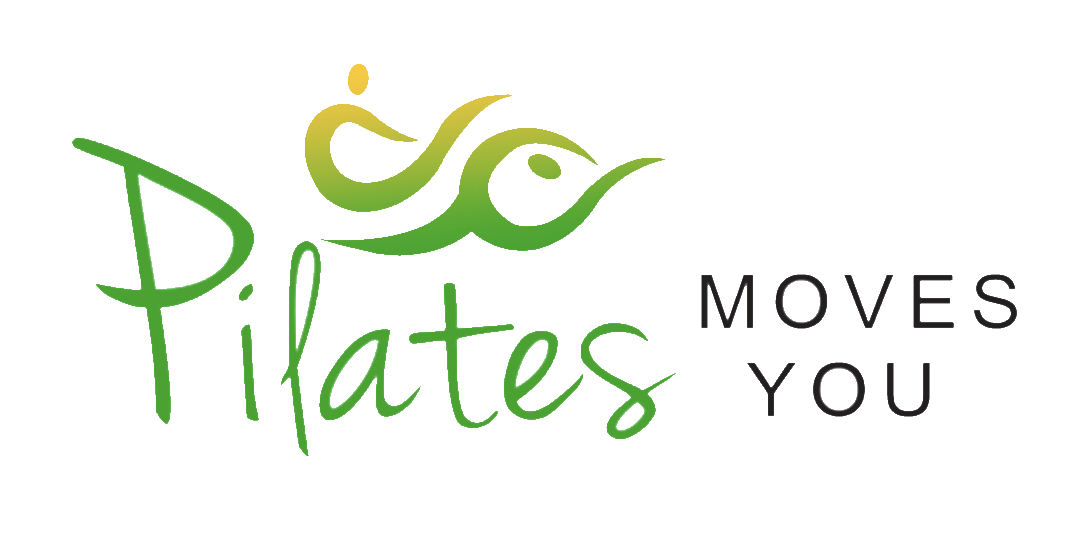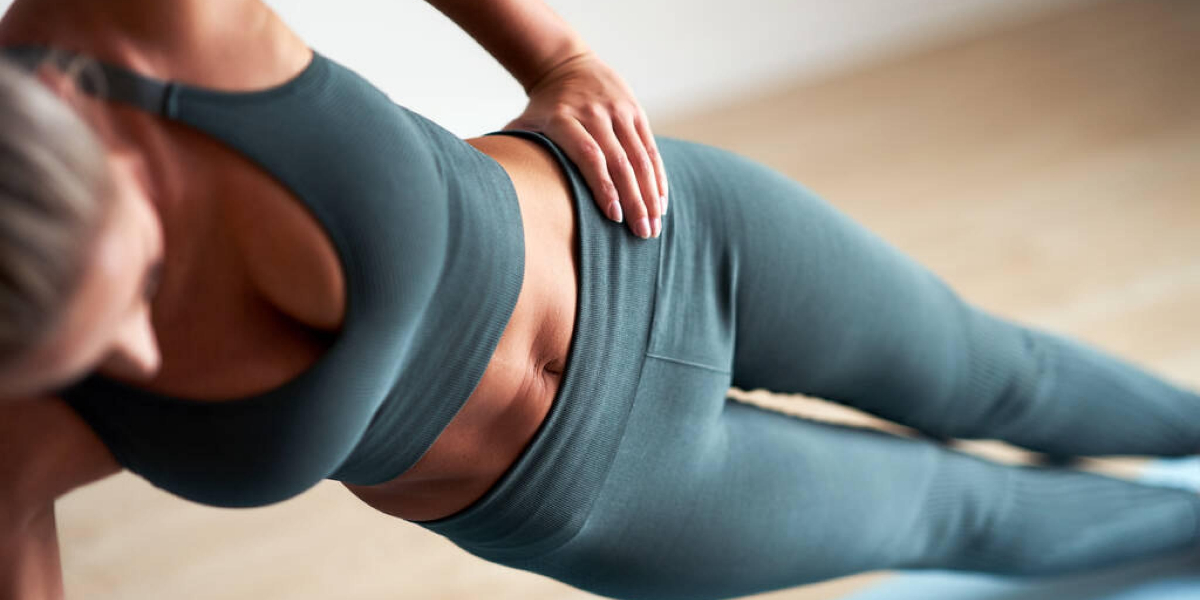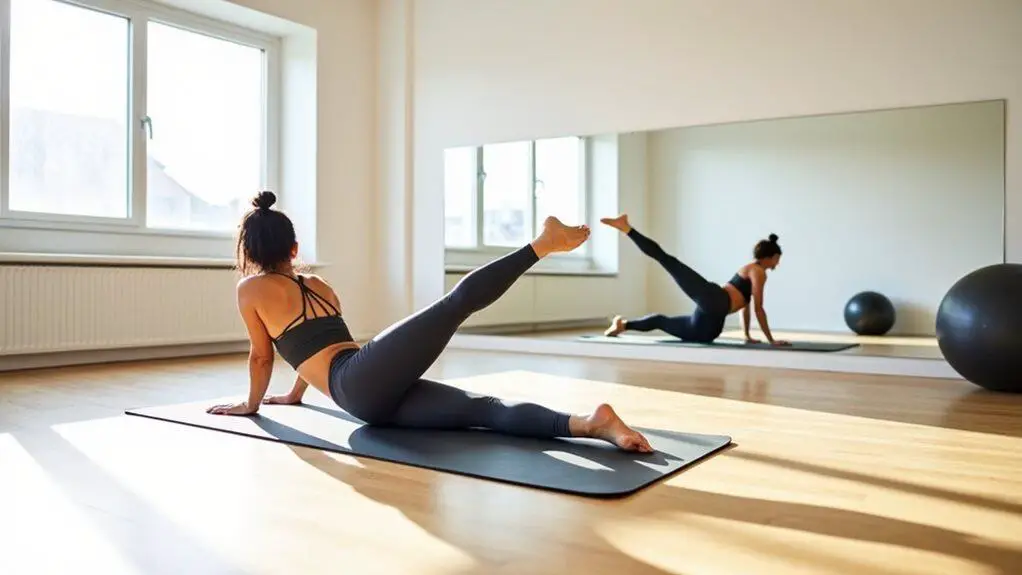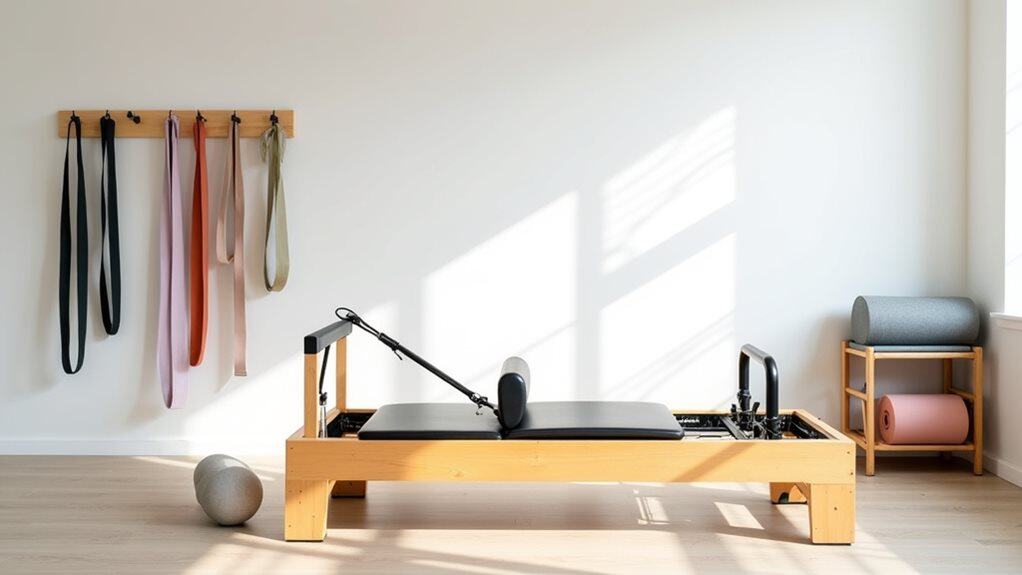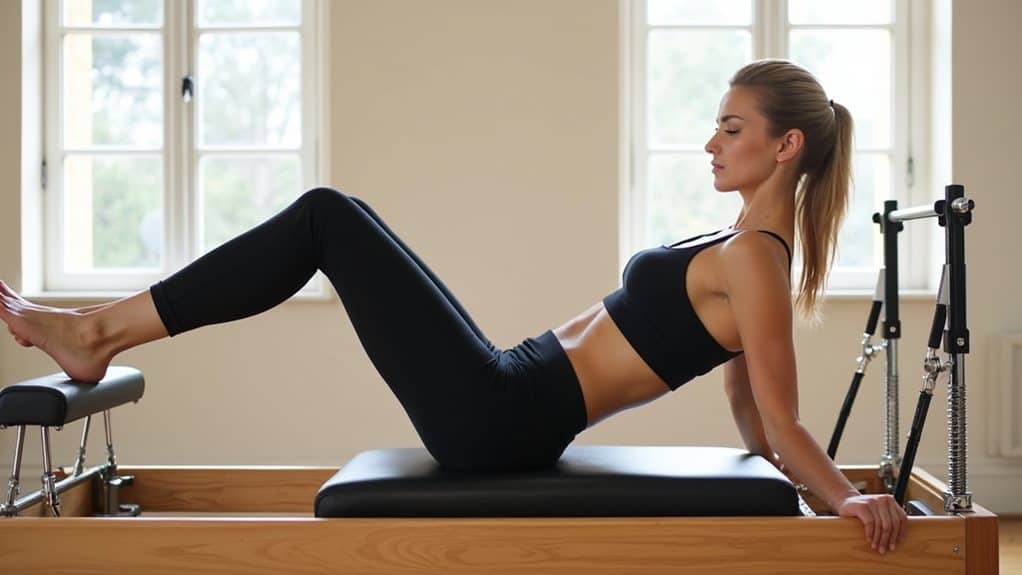If you’re interested in fitness, Pilates is one of the more accessible ways to exercise. You might have some questions about how Pilates will affect you, though. How can Pilates change your body, and does Pilates change your body shape?
Pilates changes your body shape by burning fat and replacing it with lean, toned muscle. At first, your muscles will have both newly formed muscle and fat, which make them appear bigger or fatter. After this period passes, the muscles gain their toned and sculpted appearance synonymous with Pilates.
In this article, I’ll be describing what Pilates is, what it does to your body, the benefits that you can get from practising Pilates, and much more relevant info on the topic.
What is Pilates?
Pilates was invented by Joseph Pilates, who began developing the groundwork while imprisoned in an English internment camp during WWI. He began by doing mat exercises and later started making use of items like bedsprings to create makeshift body-resistance equipment. Using this home made equipment, Joseph helped physically rehabilitate fellow inmates.
Pilates is a type of low-intensity exercise that consists of repetitive movements, typically performed on a yoga mat or special equipment. The goal of Pilates is to increase strength, flexibility, and stability within the body, specifically, the abdominal regions.
It is popular among dancers because it increases flexibility and efficiency of movement in everyday motions. Building core strength is the foundation of Pilates and helps reinforce muscles and control throughout the abdomen, but core strength is just the beginning of what Pilates has to offer.
Pilates is further explained and clarified within its six main principles, which summarize the Pilates philosophy and mindset.
The 6 Principles of Pilates
The six main principles of Pilates are concentration, control, breath, flow, precision, and centering. Each is a key component that together forms a cohesive picture of what Pilates is all about.
Here’s a more detailed explanation of each of these principles:
- Concentration: Total focus with the mind is necessary to gain the maximum bodily and mental benefits that Pilates offers. Without mental focus, you are losing out on a portion of what Pilates has to teach.
- Control: Precise and exact control over bodily movements is central to every Pilates movement. You’re encouraged to deliberately control your movements for maximum efficiency and safety. With greater control comes not only flexibility, but power.
- Precision: Going hand in hand with control is precision, making precise movements combined with proper core alignment and breathing technique. Keen awareness of the tiniest motions within a motion is key here.
- Breath: Joseph Pilates himself noted that most people tend to breathe shallowly without thinking about it. Pilates seeks to correct this by demanding full exhalations followed by full inhalations so that you can deliver the optimal amount of oxygen to your muscles and body for the best performance.
- Flow: Flow is a term to describe how movements should, ideally, flow into one another. The first movement should carry into the second without even looking like there is a second movement, and so on. Pilates’ movements are designed to flow effortlessly into each other. You’ll notice that with greater flow comes greater efficiency, and you can put that excess energy to work doing something more valuable with your life.
- Centering: Centering comes from the fact that Pilates is all about movements that extend from your core, or center. This is traditionally defined as the abdomen, glutes, hamstring, thighs, and back.
How Can Pilates Change Your Body Shape?
Rather than bulking up muscles as in weightlifting, Pilates prioritizes working your core muscles and building lean muscle. Pilates does not change the shape of your body, but rather, it makes your body leaner and sculpted, eschewing muscle gains in one area in favour of an all-over approach.
Pilates primarily works the core muscles, such as the abdomen, hips, lower back, buttocks, and thighs. By strengthening this portion of the body, the exercise improves alignment with the rest of your body and promotes greater flexibility.
During a brief transitionary period, you may notice a change in body composition.
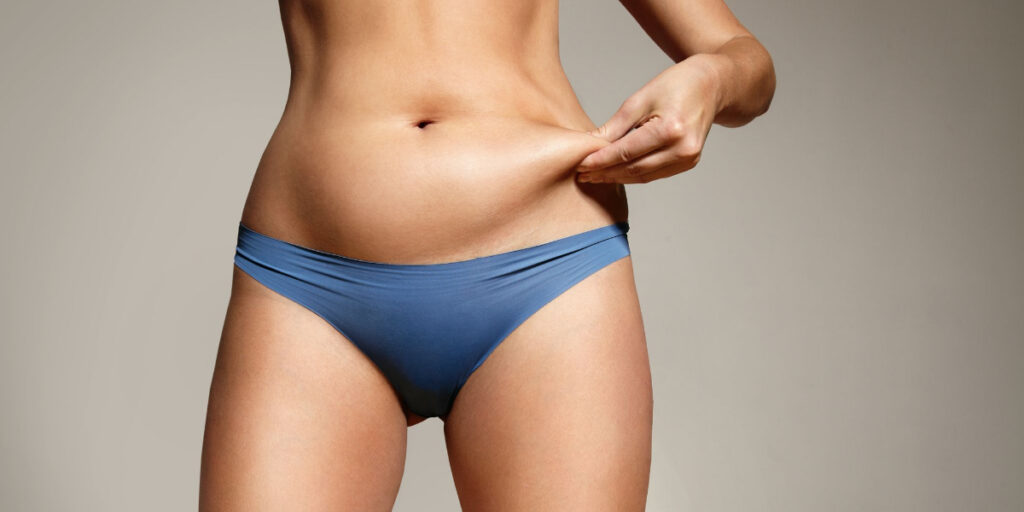
This is most commonly seen in the thighs, but it’s perfectly normal because before the fat is completely burned away, muscle has begun to build already. During this period, the thighs can appear bigger until the fat totally burns off and leaves the toned muscle in its place.
Does Pilates Build Muscle?
Unlike weightlifting and other types of exercise, Pilates increases muscle strength and tone without unnecessarily bulky gains. The difference is that the muscles Pilates produce are more functional for everyday tasks.
In practical terms, Pilates lengthens and tones the muscles rather than bulking and bunching them up as weightlifting does.
This helps improve the overall density of the muscles, producing more strength and power.
If muscular appearance is what you’re after, Pilates does help you work your abs, which can help you get a six-pack. Other than that, you’ll have to settle for lean, sculpted muscles and a tight, toned core.
Benefits of Pilates
Pilates has a surprising array of benefits that would add great value to anyone’s life. Rather than focusing on one area of the body, Pilates is a full body workout. It is simply a great foundational exercise, and here are some of the benefits that prove it.
Let’s take a closer look at these benefits.
Increased Flexibility and Mobility
Pilates uses very deliberate motions that help create a full range of motion in the body.
Your muscles become more elastic, and you gain more power through your movements, which grants you more mobility. An important part of Pilates is going through full motions very carefully and slowly, which often includes aspects of strength training all in one exercise.
Pilates is often used to rehabilitate injured and older people because of its known benefits of increased mobility and range of motion.
Increased Muscle Strength
Pilates takes advantage of a type of muscle contraction known as eccentric contraction, where muscle fibers get longer under tension.
This is what produces the sculpted look people gain from doing Pilates. What isn’t as well-known is that this does produce greater muscle strength, just like any other exercise, but it’s just a different type of strength.
Stronger Core Muscles
Pilates is widely known for its core muscle workouts, which are designed to align, strengthen, and stabilize the core and its relationship with the rest of the body. By working the core, you help align it and lay the foundation for working out the rest of the body.
Building a strong core this helps reduce pain in the back and groin areas.
Improved Posture
It turns out that slouching is really bad for you. Pilates demands alignment and posture in its movements, it gives you greater body awareness and results in improved posture, which confers a lot of health benefits. Some of these include better digestion, fewer random headaches, more efficient breathing, and better muscle function.
Enhanced Mood
As with any exercise, Pilates produces feel-good chemical endorphins that make you feel happy, reducing pain in the process. A 2018 study supports the idea that Pilates improves mood and can reduce symptoms of depression and other mental illnesses.
Helps Prevent Injury
Better posture, alignment, and flexibility all come together to relax the body. Many muscle strains are caused by poor awareness and lack of stretching, but Pilates highly encourages cultivating a better sense of bodily awareness and, of course, lots of stretching.
Increased Energy Levels
Pilates promotes improved blood circulation through deep breathing practices, which helps us build more energy. Combined with endorphins that encourage repeated exercise, regular Pilates can help remedy low energy levels.
Better Balance
By improving posture, strengthening the core, and promoting bodily awareness, Pilates can help your sense of balance. The elderly, in particular, greatly benefit from better balance because it reduces the chances of falls.
Research has shown that it provides a marked improvement in static and dynamic balance in elderly women.
How Long Does It Take To See Results From Pilates?
Beginners can see results from Pilates within three to six weeks if they are doing it two to three times a week. Of course, this greatly depends on the intensity and length of your workout.
Pilates is relatively low intensity, so unlike other exercises that strain the muscles and require a resting period, it is safe enough to do every day.
In the first couple of weeks, your body will begin adapting to the new regimen, slowly building lean muscle and tightening your core. You may also notice increased energy along with some soreness.
If you can push past the first few weeks of Pilates, you will likely notice some effects, like fat burning and perhaps an increase in your metabolism. Increased metabolism sets the stage for even more weight loss and muscle toning while helping blood circulation too.
Once you’ve made Pilates a habit after a couple of months, you begin to really get the results you want, such as toned muscles, a tighter core, and greater flexibility. You’ll marvel at how much wider your range of motion is, and energy levels will be through the roof, comparatively speaking.
Can You Get Fit Only Doing Pilates?
You can get fit only doing Pilates because it works out the entire body. Even if a particular class focuses on the core, legs, or arms, Pilates requires alignment throughout all parts of the body. You’ll notice that most Pilates motions use a majority of the muscles in the body.
If your goal is to stay in shape, Pilates exercises are a great choice. To enhance the workout further, consider adding some light cardio like jogging.
Is Pilates Good for Weight Loss?
Any exercise that works out the muscles and elevates the heart rate will burn calories, and burning calories is how you lose weight.
Pilates is good for weight loss because it works out the core and encourages a more rapid metabolism. Increased metabolism helps the body burn even more fat in the future. Progress may be slow at first while the body adapts, but it will be supercharged after just a few weeks of regular Pilates.
The caveat to only doing Pilates for weight loss is that it doesn’t elevate your heart rate quite as high as, say, running or swimming. For the best weight loss results, you should combine Pilates with a regular cardio routine that involves running, swimming, or another cardio-focused activity.
Should I Do Pilates Alone or in a Class?
You should do Pilates in a class. While Pilates is perfectly doable alone at home, you benefit the most from taking a class with a qualified instructor. An experienced instructor is a huge boon, able to provide you with advice tailored to your specific needs and technique.
I have clients who I give ‘homework’ to, a set of exercises to do in-between our classes. This is helpeful to get them to incorporate Pilates into their everyday lives, but I always get feedback that they feel far more confident when being instructed how to do each movement.
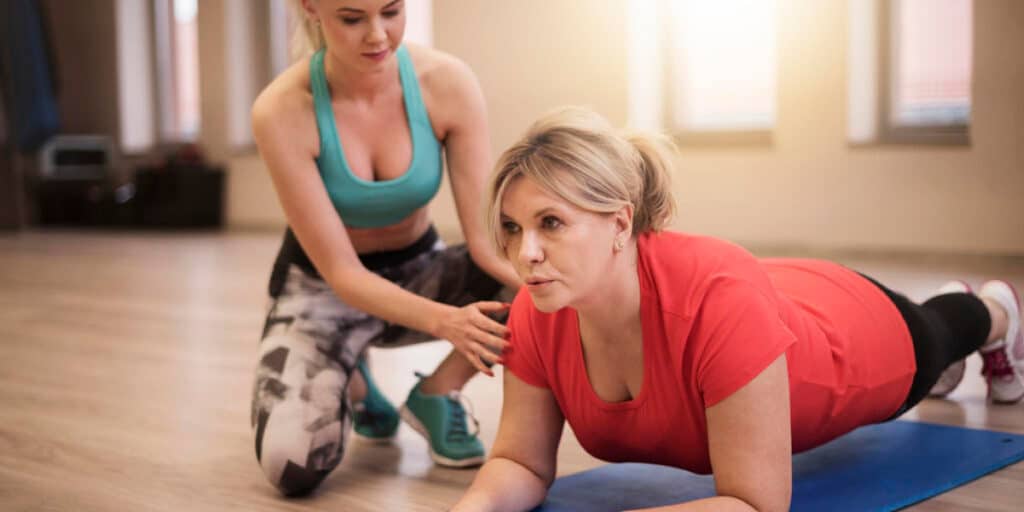
The other big benefit of joining a class is that you’ll be surrounded by similar-minded peers who want to see you succeed and can give you encouragement when you feel down. They are more likely to notice and comment on a change in your muscle tone, which can be a huge moral booster.
Do You Need To Diet for Pilates?
There’s no special diet for Pilates, but as with any exercise, its results will be enhanced by eating more healthily. Generally, you shouldn’t eat a large meal before doing Pilates, because you’re going to be working your core a lot.
Instead, opt for a light snack with protein prior to a class.
For a morning class, a hard-boiled egg with some nuts and yogurt would be a perfect example.
For afternoon classes, you’d be better served by eating a full breakfast that will keep you satiated but not too full going into your class.
Unlike exercises like running, Pilates doesn’t benefit much from carb-loading. If you eat carbs, consider waiting until the evening after a class combined with some protein and healthy veggies to replenish.
Final Thoughts
Pilates is a time-tested and effective exercise regimen that helps you get in shape without bulking up. Your body will go through some changes, you’ll gain a stronger core and gain greater body awareness, resulting in a beautifully sculpted and lean look.
Sources
- Fit Seer: How Long Does It Take To See Results From Pilates?
- Healthline: 19 Pilates Benefits Backed By Science
- S National Library of Medicine: The Effects of Pilates Mat Exercise on the Balance Ability of Elderly Females
- S National Library of Medicine: The effects of pilates on mental health outcomes: A meta-analysis of controlled trials
